
A lighthouse is a tower, building, or other type of physical structure designed to emit light from a system of lamps and lenses and to serve as a beacon for navigational aid for maritime pilots at sea or on inland waterways.

Artificial lighting technology began to be developed tens of thousands of years ago and continues to be refined in the present day.

Longships Lighthouse is an active 19th-century lighthouse about 1.25 mi (2.0 km) off the coast of Land's End in Cornwall, England. It is the second lighthouse to be built on Carn Bras, the highest of the Longships islets which rises 39 feet (12 m) above high water level. In 1988 the lighthouse was automated, and the keepers withdrawn. It is now remotely monitored from the Trinity House Operations & Planning Centre in Harwich, Essex.
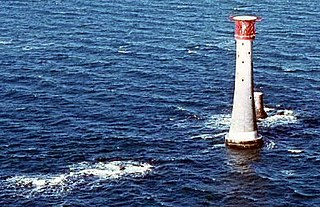
The Eddystone Lighthouse is a lighthouse on the Eddystone Rocks, 9 statute miles (14 km) south of Rame Head in Cornwall, England. The rocks are submerged below the surface of the sea and are composed of Precambrian gneiss.

A kerosene lamp is a type of lighting device that uses kerosene as a fuel. Kerosene lamps have a wick or mantle as light source, protected by a glass chimney or globe; lamps may be used on a table, or hand-held lanterns may be used for portable lighting. Like oil lamps, they are useful for lighting without electricity, such as in regions without rural electrification, in electrified areas during power outages, at campsites, and on boats. There are three types of kerosene lamp: flat-wick, central-draft, and mantle lamp. Kerosene lanterns meant for portable use have a flat wick and are made in dead-flame, hot-blast, and cold-blast variants.
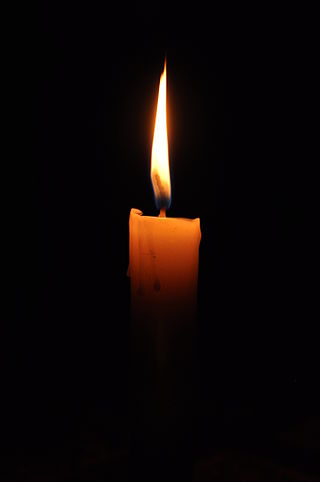
Candlepower is a unit of measurement for luminous intensity. It expresses levels of light intensity relative to the light emitted by a candle of specific size and constituents. The historical candlepower is equal to 0.981 candelas. In modern usage, candlepower is sometimes used as a synonym for candla.
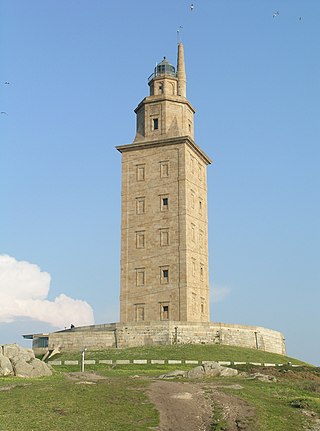
The History of Lighthouses refers to the development of the use of towers, buildings, or other types of structures as an aid to navigation for maritime pilots at sea or on inland waterways.

A Bude-Light was a very bright oil lamp invented by Sir Goldsworthy Gurney, patented by him on 8 June 1839 and named after Bude, Cornwall, where he lived.
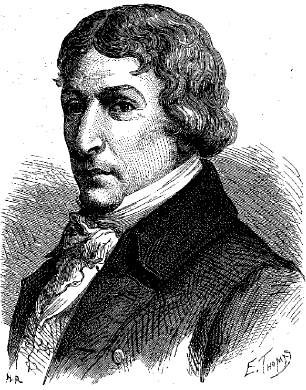
François-Pierre-Amédée Argand, known as Ami Argand was a Genevan physicist and chemist. He invented the Argand lamp, a great improvement on the traditional oil lamp.

The Lizard Lighthouse is a lighthouse at Lizard Point, Cornwall, England, built to guide vessels passing through the English Channel. It was often the welcoming beacon to persons returning to England, where on a clear night, the reflected light could be seen 100 mi (160 km) away.

The Argand lamp is a type of oil lamp invented in 1780 by Aimé Argand. Its output is 6 to 10 candelas, brighter than that of earlier lamps. Its more complete combustion of the candle wick and oil than in other lamps required much less frequent trimming of the wick.

South Foreland Lighthouses are a pair of Victorian lighthouses on the South Foreland in St. Margaret's Bay, Dover, Kent, England, used to warn ships approaching the nearby Goodwin Sands. There has been a pair of lighthouses at South Foreland since at least the 1630s. Even after the decommissioning of the Lower Lighthouse the pair continued to be used as leading marks, with Admiralty charts into the 20th century indicating that the 'Lighthouses in line lead south of the Goodwin Sands'.

John Richardson Wigham was a prominent lighthouse engineer of the 19th century.

Cromer Lighthouse is situated in the coastal town of Cromer, in the English county of Norfolk.
The Lewis lamp is a type of light fixture used in lighthouses. It was invented by Winslow Lewis who patented the design in 1810. The primary marketing point of the Lewis lamp was that it used less than half the oil of the prior oil lamps they replaced. The lamp used a similar design to an Argand lamp, adding a parabolic reflector behind the lamp and a magnifying lens made from 4-inch-diameter (100 mm) green bottle glass in front of the lamp. A similar variant using a parabolic reflector was created by the inventor of the Argand lamp, Aimé Argand. While the Argand variant became widely used by European lighthouses, the Lewis lamp design was selected by the United States for use in American lighthouses.

Completed in 1849, the original 20-metre (66 ft) Wadjemup Lighthouse was Western Australia's first stone lighthouse and was built to provide a safer sailing passage for ships to Fremantle Port and the Swan River Colony.
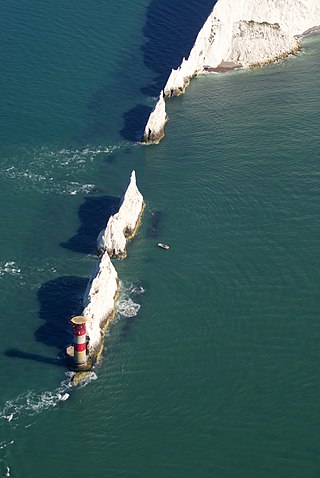
The Needles Lighthouse is an active 19th century lighthouse on the outermost of the chalk rocks at The Needles on the Isle of Wight in the United Kingdom, near sea level. Designed by James Walker, for Trinity House at a cost of £20,000, it was completed in 1859 from granite blocks. It stands 33.25 metres (109.1 ft) high and is a circular tower with straight sides. It replaced an earlier light tower on top of a cliff overhanging Scratchell's Bay, which was first lit on 29 September 1786.
A Wells light was a large paraffin-fuelled (kerosene) blowlamp used for engineering work, particularly for illumination, in Victorian times. At a time before widespread electrical lighting, they were the most common form of high-powered portable illumination used for construction work, particularly railways, civil engineering, shipyards and ironworks.

Lowestoft Lighthouse is a lighthouse operated by Trinity House located to the north of the centre of Lowestoft in the English county of Suffolk. It stands on the North Sea coast close to Ness Point, the most easterly point in the United Kingdom. It acts as a warning light for shipping passing along the east coast and is the most easterly lighthouse in the UK.

The moderator lamp is a type of 19th century oil lamp. It displaced the more complex Carcel lamp which used a clockwork pump. Its mechanism was simpler and required less maintenance or repair. The moderator lamp was invented in 1837 by Charles-Louis-Félix Franchot (1809-1881). Like the Carcel lamp the oil reservoir was below the burner and it allowed 360 degree illumination. Earlier oil lamps such as the Argand had a reservoir above the burner which made them top heavy and obscured some of the light. The reliability of the mechanism led to them being adopted in lighthouses.




















